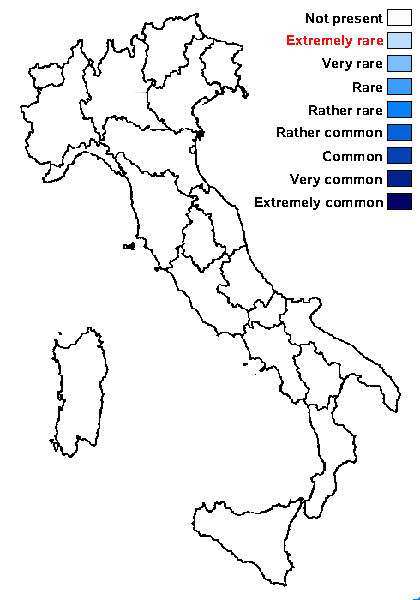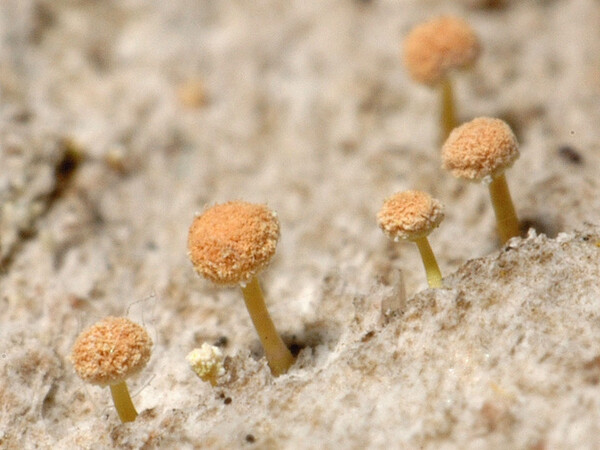Sclerophora amabilis (Tibell) Tibell
Beih. Nova Hedwigia, 79: 679, 1984. Basionym: Coniocybe amabilis Tibell - Publ. Herb. Univ. Uppsala,10: 6, 1982
Synonyms:
Distribution:
Description: Thallus crustose, endosubstratic, poorly evident. Apothecia stalked, pin-like, 0.6-1.7 mm high, the stalk 0.1-0.2 mm thick, brown to reddish brown, often yellowish- to white-pruinose in upper part, consisting of hyaline, non-sclerotized, periclinally arranged hyphae. Capitulum spherical, 0.4-0.5 mm across; mazaedium in mature ascomata sometimes slightly pruinose, pale ochraceous. Ascomata initials sometimes covered by a dense yellow pruina, which later changes to violet-red. Exciple forming a small, 40-50 µm thick collar at the base of the capitulum, consisting of hyaline, radiating, apically somewhat branched, 1.5-2 µm thick hyphae, its lower side covered by a pale lemon yellow to white pruina; hypothecium colourless. Asci cylindrical or cylindrical-clavate, formed singly and dissolving early, without apical structures, with 1(-2)-seriately arranged ascospores. Ascospores 1-celled, globose to broadly ellipsoid, hyaline, 5-6 µm wide, the wall with a minutely verrucose ornamentation. Photobiont trentepohlioid. Spot tests: all parts of the ascomata including the yellow pruina K-, C-, KC-, P-; the violet-red pruina dissolves in K forming plate-like, violet-red crystals. Chemistry: thallus without lichen substances.Note: a very rare species described from New Zealand, but with a circumboreal-montane distribution, growing on lignum of deciduous trees in old deciduous forests; known from a few sites in Northern and Central Europe, to be looked for in Italy.
Growth form: Crustose
Substrata: lignum
Photobiont: Trentepohlia
Reproductive strategy: mainly sexual

Predictive model
Growth form: Crustose
Substrata: lignum
Photobiont: Trentepohlia
Reproductive strategy: mainly sexual

Predictive model
 INDEX FUNGORUM
INDEX FUNGORUM
 GBIF
GBIF


